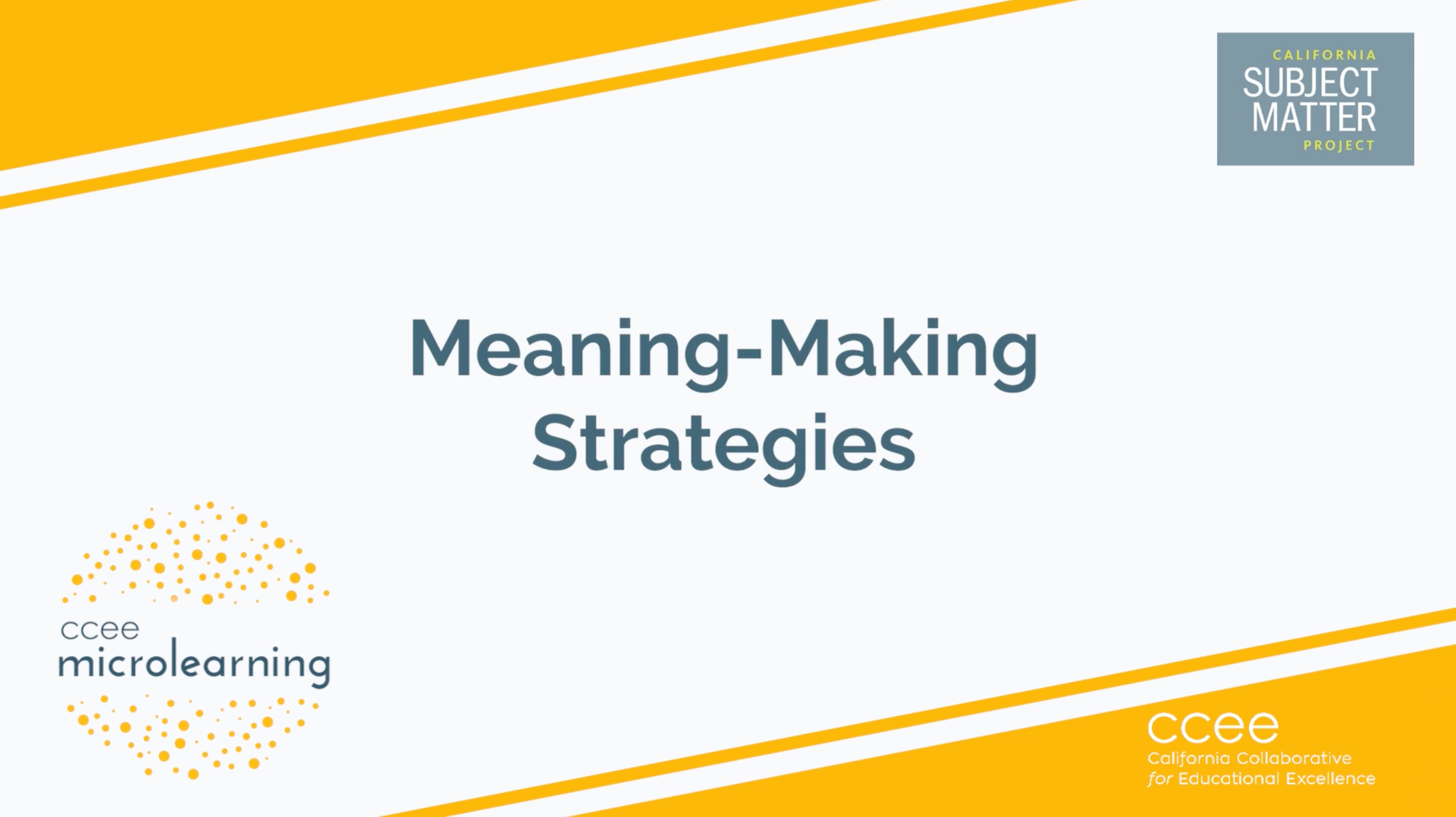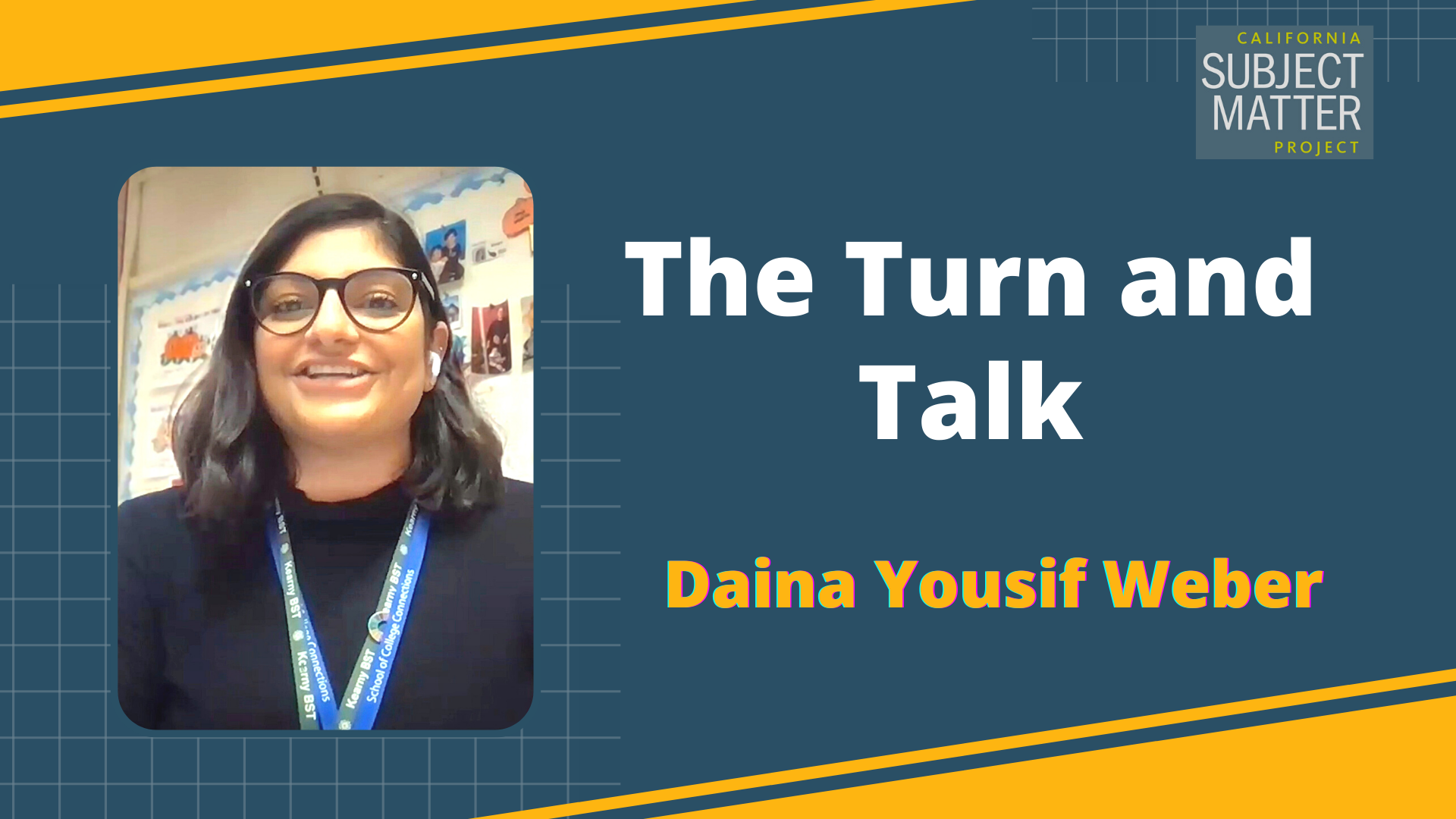Watch the Video
Presenter
Chris Lewis is an English teacher at Mountain View High School District in Mountain View, California.
Transcript
Hi, my name is Chris Lewis and I am a teacher on Special Assignment supporting English learners at Mountain View High School in the city of El Monte. I am here representing the California History Social Science project, and I want to share with you a strategy to help students analyze political cartoons.
The strategy called “See, Mean, Matter” allows students to think about visual imagery in a more complex way. The example I’m going to be explaining is for a political cartoon, but it can be applied to photographs or any kind of artwork that students are looking at. There are three main steps to the process, and there is a graphic organizer that will help students with the procedure.
The first step is to make sure that students have a political cartoon that they can analyze. Students can find political cartoons online in various historical websites, as well as in their textbooks. Once they’ve identified the political cartoon they’re going to analyze, they’re then going to think about the historical context of the cartoon. They can think about who created the cartoon, the year in which it was created, and what other major historical events and historical figures are necessary to think about the context of the political cartoon. Once students have identified the important historical information, then they can start analyzing the different elements of the cartoon.
Step two of the process is to follow a few different procedures to think about the different parts of the political cartoon. The first part of step two is the “See” portion. Students are going to ask themselves, “what do I see in the political cartoon?”. They’re going to make observations about anything that they see in the image. We don’t want them to make any kind of interpretation or analysis yet. We just want basic scientific observations.
After they’ve made their observations, then we are going to move on to the “Do” portion. What do cartoonists do in order to create their message? Some examples of these different techniques include symbolism, the use of color, exaggeration — all of the different artistic techniques in order to convey a message.
After students have identified the different artistic techniques, they’re then going to think about what do those different elements “Mean”. This is where students will do some interpretation. They’ll take their observations and the different items that they identified, and think about what do those things symbolize, what do they represent, and how are they trying to create a message?
After students have done that portion, they’re then going to move on to the “Matter” part: why does this information “Matter”? Essentially we’re asking students to think about what message is the cartoonist trying to convey to us as readers. We think about all of the information in context and try to figure out what is the argument based on the evidence that we can find in the political cartoon.
One of the tips that I’m providing is using sentence frames in order to help students think about this information. Each of the steps in “See”, “Do”, “Mean”, and “Matter”, have different sentence frames that will allow students to answer the questions in a more complete way.
The last part of the process is to allow students to take all of the information that they’ve collected about the political cartoon and either do a written summary or engage in a discussion. Some students may feel more comfortable having a discussion before they get to writing, which is usually a good idea. Usually they’re able to express their ideas verbally before they get to the written portion. The summary is a way for them to combine all of the evidence and all of the information that they’ve learned about the political cartoon to explain what the cartoonist is trying to argue.
I really like this strategy because it allows students to think more deeply about the way political cartoonists construct messages. We’re often surrounded by visual media, and we need to give students a way to think about that visual media and the complexity of how messages can be sent with images and words, and color.
I hope your students enjoy using “See, Mean, Matter” to analyze all of the visual material that they come across in your class.
Accompanying Materials & Resources
- Quick Guide: See, Mean, Matter (PDF – 1 Page)
- See, Mean, Matter with Chris Lewis, Political Cartoon (PDF)
- See, Mean, Matter with Chris Lewis, Political Cartoon Analysis Sample (PDF)
- See, Mean, Matter with Chris Lewis, Political Cartoon Analysis Blackline Master (PDF)
- See, Mean, Matter with Chris Lewis, HowTo (PDF)



